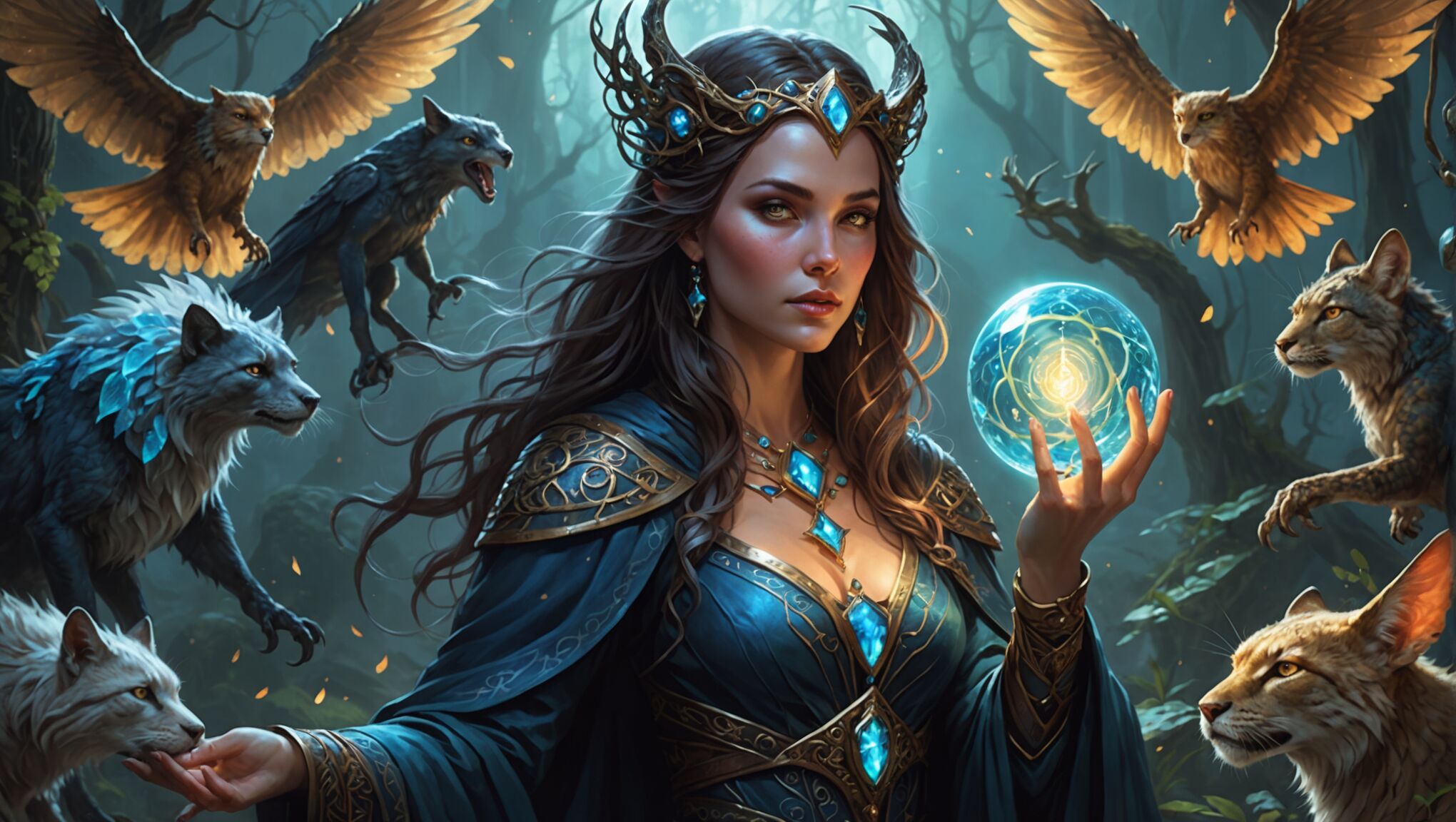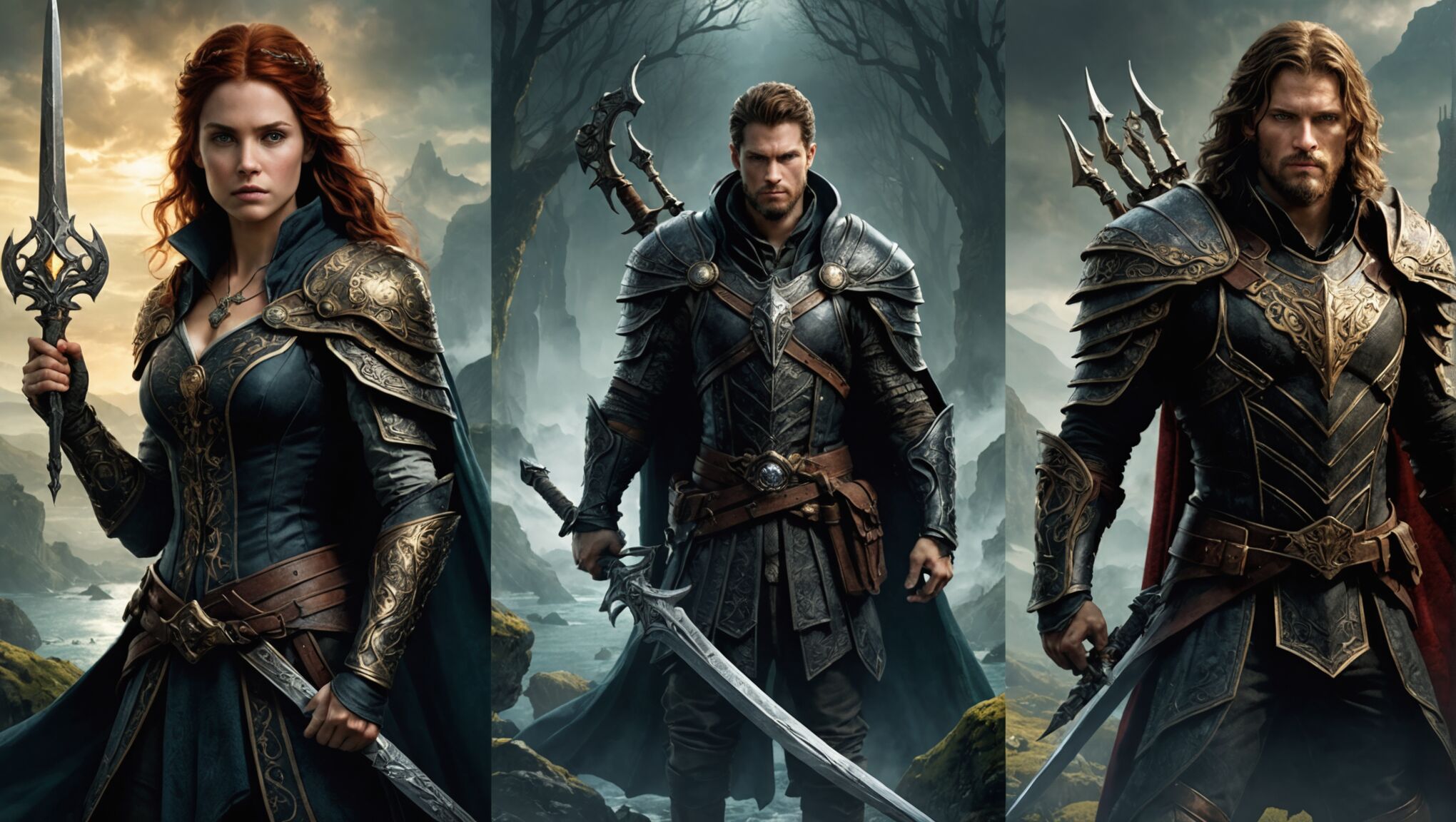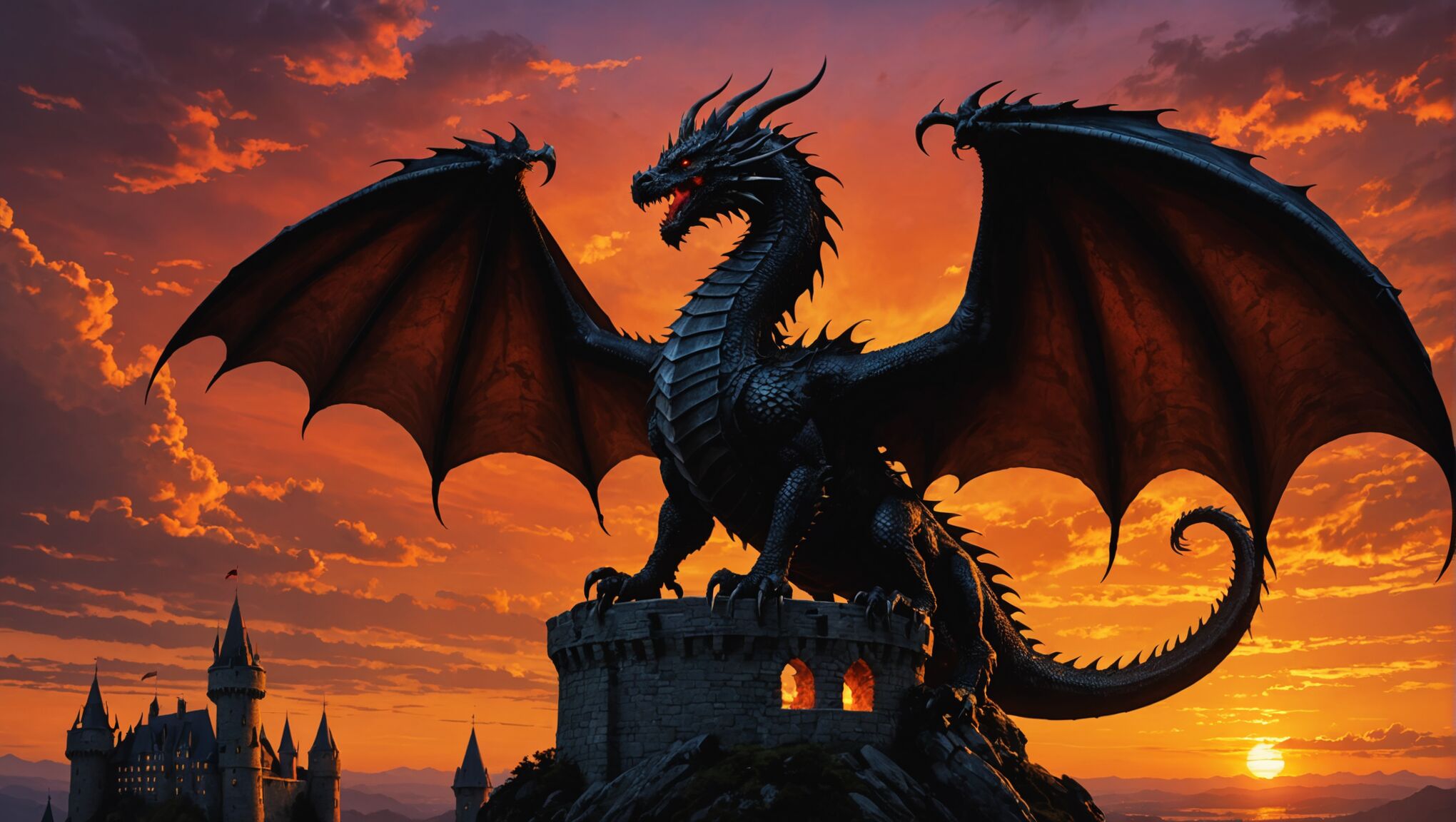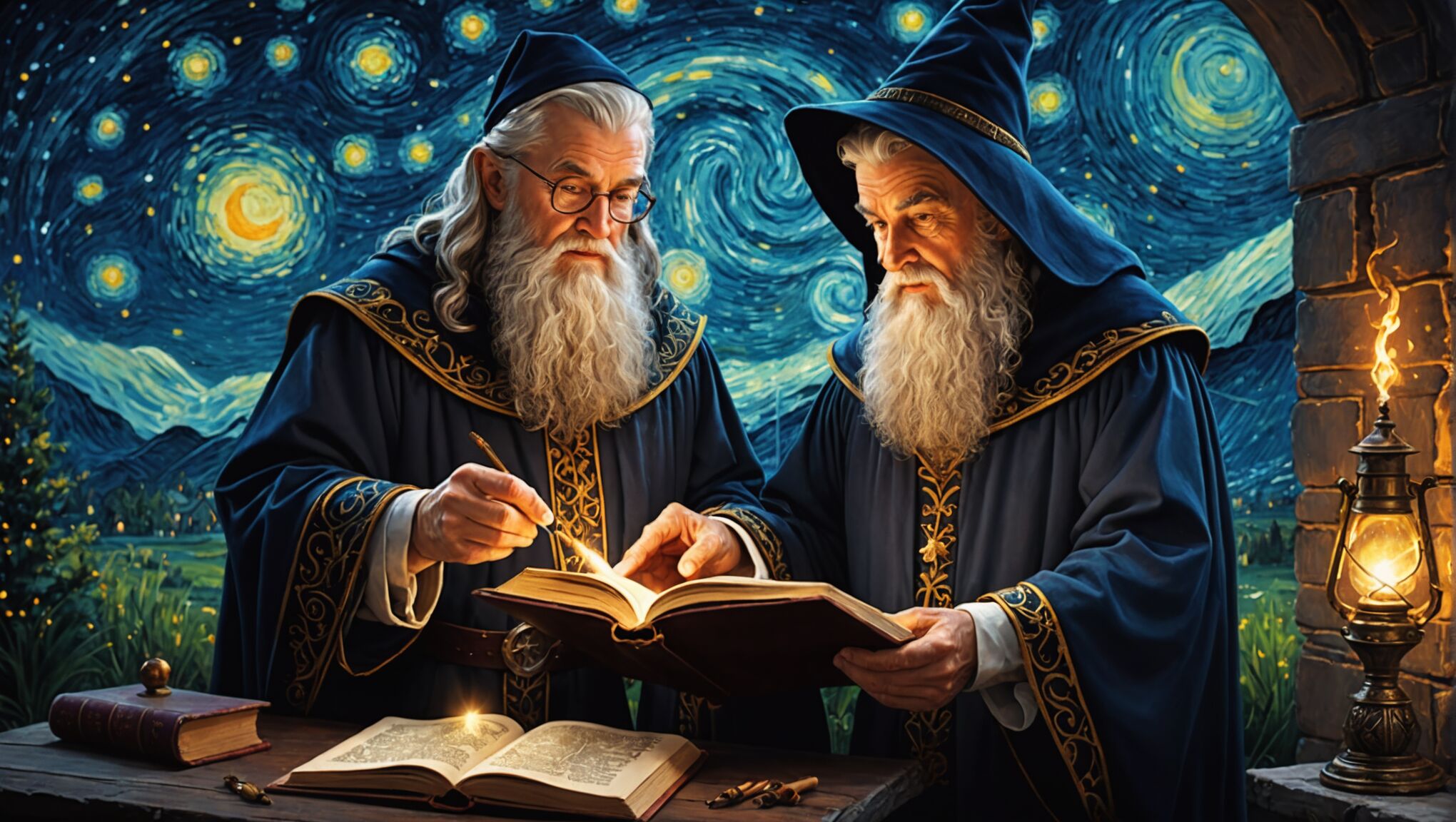blog
The Role of Characters in Fantasy Book Cover Design
Fantasy book covers often feature characters that embody specific archetypes, serving as visual shorthand for the story within. The hero archetype, typically depicted as a brave and noble figure, frequently takes center stage on covers. These characters may be shown wielding weapons, standing tall, or facing off against a looming threat. The mentor archetype, often portrayed as a wise old sage or wizard, can be seen guiding or instructing younger characters. Villains and antagonists are another crucial archetype, often depicted in dark, menacing poses or lurking in the shadows, hinting at the conflict to come.
Other common archetypes include the trickster, often shown with a mischievous grin or engaging in playful antics; the sidekick, usually positioned near the hero but in a supporting role; and the love interest, whose presence may be indicated through subtle romantic tension or proximity to the protagonist. Mythical creatures such as dragons, unicorns, or phoenixes can also serve as character archetypes, representing forces of nature or magical elements within the story.
The chosen archetypes on a cover not only reflect the book’s content but also help potential readers quickly identify the type of fantasy story they can expect. For instance, a cover featuring a young protagonist alongside a magical creature might signal a coming-of-age tale, while one showcasing a group of diverse characters could hint at an ensemble adventure. By leveraging these familiar archetypes, cover designers create instant connections with the audience, drawing them into the fantastical world before they’ve even opened the book.
Symbolism and character representation
 In fantasy book cover design, symbolism and character representation play a crucial role in conveying deeper meanings and themes of the story. Characters are often depicted with specific objects, animals, or elements that symbolize their traits, powers, or destinies. For instance, a character holding a sword may represent strength and bravery, while one surrounded by nature might symbolize a connection to the earth or magical abilities tied to the natural world.
In fantasy book cover design, symbolism and character representation play a crucial role in conveying deeper meanings and themes of the story. Characters are often depicted with specific objects, animals, or elements that symbolize their traits, powers, or destinies. For instance, a character holding a sword may represent strength and bravery, while one surrounded by nature might symbolize a connection to the earth or magical abilities tied to the natural world.
“Symbolism is the art of imparting ideas and emotions not by describing them directly, but by suggesting them through symbolic images.” – Arthur Symons
Clothing and accessories are also powerful tools for symbolic representation. A character adorned with intricate jewelry might suggest royalty or wealth, while tattered robes could indicate a humble background or a journey of hardship. Crowns, amulets, and magical artifacts are frequently used to hint at a character’s importance or the central conflict of the story.
Color choices in character representation can carry significant symbolic weight. Red might signify passion or danger, while white could represent purity or divinity. The use of contrasting colors for different characters can symbolize opposing forces or conflicting ideologies within the narrative.
Facial expressions and body language are equally important in symbolic representation. A determined gaze might symbolize unwavering resolve, while a hunched posture could represent the weight of responsibility on a character’s shoulders. These subtle cues can provide insights into a character’s personality and role in the story without the need for explicit explanation.
Animal companions or familiars often accompany characters on fantasy book covers, serving as extensions of their personalities or abilities. A wise owl perched on a character’s shoulder might symbolize knowledge or foresight, while a fierce wolf at their side could represent loyalty and primal instincts.
Environmental elements surrounding the characters can also carry symbolic meaning. A character standing at a crossroads might symbolize a pivotal decision or turning point in their journey, while one emerging from shadows into light could represent a transformation or revelation.
By carefully selecting and combining these symbolic elements, cover designers create a rich visual language that not only captures the essence of the characters but also provides clues about the broader themes and conflicts within the fantasy world. This symbolic approach allows potential readers to form immediate connections with the characters and story, enticing them to delve deeper into the pages of the book.
Composition and character placement

The strategic placement of characters on a fantasy book cover is crucial for creating a visually compelling and narratively informative design. Typically, the main protagonist takes center stage, occupying the foreground or a prominent position that immediately draws the viewer’s eye. This central placement not only emphasizes the character’s importance but also creates a focal point for the entire composition.
Supporting characters are often positioned around the protagonist, their placement indicating their relationship to the hero and their role in the story. For instance, a loyal companion might be placed slightly behind and to the side of the main character, while a love interest could be positioned in close proximity, perhaps with subtle visual cues suggesting their connection.
Antagonists or villainous characters are frequently depicted in opposition to the hero, either facing them directly or looming ominously in the background. This oppositional placement creates tension and hints at the central conflict of the narrative. Sometimes, only parts of the antagonist may be shown – a shadowy silhouette or a pair of menacing eyes – to build mystery and intrigue.
Typography sets the tone for your fantasy cover. Discover more here.
The use of perspective and scale in character placement can dramatically affect the cover’s impact. A character rendered larger than life, dominating the frame, can convey power and importance. Conversely, a smaller figure set against a vast landscape can evoke a sense of adventure and the enormity of the quest ahead.
Layering characters at different depths within the composition adds dimension and complexity to the cover. This technique can be used to show the hierarchy of characters or to hint at the multi-faceted nature of the story. For example, placing ethereal figures in the background might suggest magical elements or ancestral presences influencing the main narrative.
The direction in which characters are facing also carries significance. A character looking directly at the viewer creates an immediate connection, inviting them into the story. Characters gazing off into the distance can evoke a sense of wonder or anticipation, while those shown in profile might be caught in a moment of action or contemplation.
Negative space around characters is equally important in composition. Clever use of empty space can highlight key characters, create balance, or even suggest unseen threats or mysteries. It can also provide room for title text and other necessary cover elements without cluttering the design.
Dynamic poses and movement within the composition can bring energy and excitement to the cover. Characters shown mid-action, with flowing capes or brandished weapons, can capture the reader’s imagination and suggest the thrilling adventures that await within the pages.
Ultimately, the composition and placement of characters on a fantasy book cover should work in harmony to tell a visual story that complements and enhances the written narrative within. When done effectively, it creates an irresistible invitation for readers to step into the fantastical world the author has created.
Color psychology in character portrayal
Color plays a pivotal role in character portrayal on fantasy book covers, evoking emotions and conveying essential information about the characters and the story. The strategic use of color psychology can significantly influence how readers perceive and connect with the characters before even opening the book.
Warm colors like red, orange, and yellow are often associated with energy, passion, and power. A character cloaked in red might be perceived as bold, fierce, or even dangerous. This color choice is particularly effective for depicting warriors, fire mages, or characters with intense personalities. Orange can suggest enthusiasm and adventure, making it suitable for young, spirited protagonists. Yellow, often linked to optimism and intellect, might be used for scholarly characters or those possessing light-based magical abilities.
Cool colors such as blue, green, and purple carry different connotations. Blue, associated with calm and trustworthiness, is frequently used for wise mentors or characters with water-based powers. Green, symbolizing growth and nature, is ideal for depicting druids, forest dwellers, or characters with earth-based abilities. Purple, traditionally linked to royalty and mysticism, is often reserved for regal characters or those possessing arcane knowledge.
Neutral tones also play a crucial role in character portrayal. Black, while sometimes associated with villainy, can also represent mystery, sophistication, or hidden depths in a character. White, symbolizing purity and innocence, might be used for angelic figures or characters embarking on a journey of self-discovery. Gray can suggest balance or moral ambiguity, making it suitable for complex anti-heroes or characters caught between opposing forces.
The intensity and saturation of colors can further nuance character portrayal. Vibrant, saturated colors might indicate youthfulness or extroversion, while muted tones could suggest maturity or introspection. Pastel shades can evoke a sense of gentleness or otherworldliness, often used for ethereal or fae-like characters.
Color combinations and contrasts are equally important in character portrayal. Complementary colors can create visual tension, perfect for depicting rivals or conflicting forces. Analogous color schemes can suggest harmony or unity among a group of characters.
Gradients and color transitions can be used to show character development or duality. A character portrayed with a color shift from dark to light might symbolize a journey from darkness to enlightenment, while a blend of contrasting colors could represent internal conflict or transformation.
The interaction of character colors with the overall color palette of the cover is crucial. A character rendered in colors that stand out from the background can immediately draw attention and signify their importance to the story. Conversely, characters whose colors blend with the environment might suggest a deep connection to their surroundings or hint at hidden identities.
Designers must also consider cultural associations with colors, as these can vary significantly across different societies. What might be perceived as auspicious in one culture could be seen as ominous in another, potentially affecting the global appeal of the cover.
By thoughtfully applying color psychology to character portrayal, fantasy book cover designers can create visually striking and emotionally resonant images that not only capture the essence of the characters but also provide subtle cues about their roles, relationships, and arcs within the story.
Evolution of character depiction in fantasy covers

Over the years, the depiction of characters on fantasy book covers has undergone significant changes, reflecting shifting artistic trends, technological advancements, and evolving reader expectations. In the early days of fantasy publishing, covers often featured stylized, almost cartoonish representations of characters, with bold lines and exaggerated features. These covers were typically hand-painted, resulting in a distinct, illustrative quality that became iconic for the genre.
As printing technologies improved, cover art became more detailed and realistic. The 1970s and 1980s saw a rise in highly rendered, almost photorealistic character depictions. Artists like Boris Vallejo and Julie Bell popularized a style that showcased muscular heroes and alluring heroines in dynamic poses, often set against fantastical landscapes. This era also saw an increase in the use of wraparound cover art, allowing for more expansive and intricate character scenes.
The 1990s and early 2000s witnessed a shift towards more atmospheric and symbolic character representations. Characters were often shown in silhouette or partially obscured, creating an air of mystery and allowing readers to project their own imaginations onto the protagonists. This period also saw an increase in the use of typography as a design element, sometimes integrating with or even replacing character art entirely.
With the advent of digital art tools, character depictions on fantasy covers have become increasingly diverse in style. Photomanipulation techniques allow for hyper-realistic portrayals, while digital painting software enables artists to create fantastical beings with unprecedented detail and imagination. This era has also seen a resurgence of more stylized and illustrative approaches, now executed with digital precision.
Contemporary fantasy covers often feature a blend of realism and abstraction in character depiction. There’s a growing trend towards minimalist designs that hint at character elements rather than showing them in full detail. This approach allows for more interpretative and conceptual cover art, appealing to readers who prefer subtlety over overt visual storytelling.
Diversity in character representation has become increasingly important in recent years. Cover art now more frequently showcases characters of various ethnicities, body types, and ages, reflecting a broader range of stories and protagonists within the fantasy genre. This shift has led to more nuanced and culturally sensitive character portrayals.
The rise of young adult fantasy has influenced character depiction across the genre, with a focus on relatable, often younger protagonists. These covers tend to feature more contemporary styling in clothing and accessories, blending modern elements with fantastical ones to appeal to a younger readership.
Digital platforms and e-books have also impacted character depiction, as covers must now be legible and impactful at thumbnail size. This has led to bolder, more graphic approaches to character design, with an emphasis on strong silhouettes and high-contrast elements that remain recognizable even at small scales.
As the fantasy genre continues to expand and diversify, character depiction on book covers is likely to evolve further. The trend towards more inclusive and varied representations, combined with advancing digital technologies, promises an exciting future for fantasy cover art, where characters can be brought to life in ever more imaginative and compelling ways.

